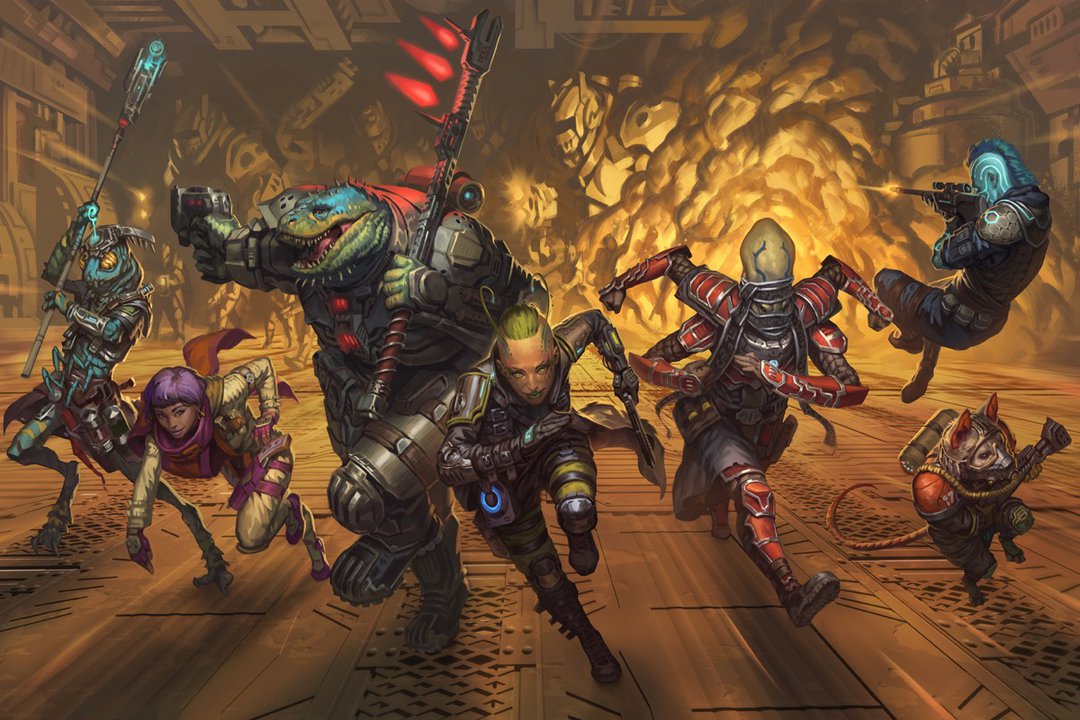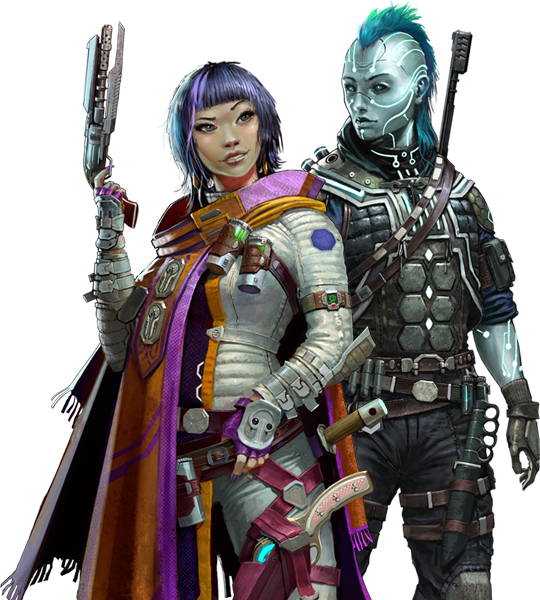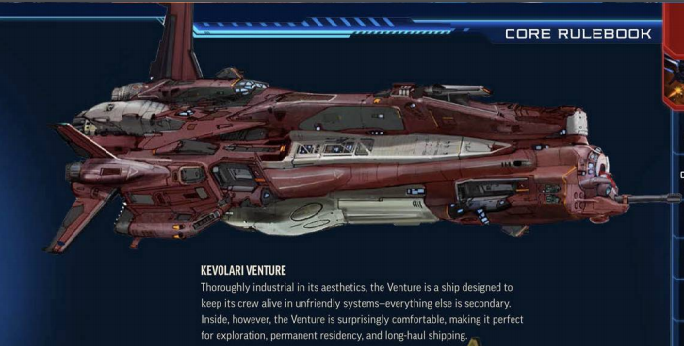As our resident Pathfinder player, I was tasked with reading the newly released Starfinder Core Rulebook and writing up a review of it after its long journey home from Gen Con. As that article approached the 2,500 word mark, I realized that it was too big of a topic to cover in a single post if I wanted to explore it in any kind of depth. So, this article is just a surface-level overview of the book and my initial impressions of Starfinder. In the coming weeks I will have two longer articles diving deeper into the setting, characters, and mechanics.

Trust me, there is a lot to unpack in just this one rulebook, with a lot of potential for creating wild, epic sci-fi fights like this one.
Without further ado, the Starfinder Core Rulebook looks very promising. It is exactly what it set out to be: Pathfinder in space. It’s even set in the same universe as Pathfinder, though thousands of years in the future. Golarion, the world where Pathfinder (mostly) takes place, exists in this universe, or at least existed.
A large part of Starfinder’s plot centers around a several-millennia-long gap in historical records called, appropriately, the Gap. Nobody knows what happened during that time, and the little information that does exist is vague and contradictory. However, what is known for sure is that the world of Golarion disappeared sometime during the Gap.
The Starfinders - the futuristic equivalent of the Pathfinders - are dedicated to exploring the universe, learning about new worlds and the beings that inhabit them. It’s assumed that your PCs are Starfinders, although of course your GM can create any scenario he or she likes.
Building a character is very similar to Pathfinder, but the system has a few tweaks. In addition to your race and class, you now also pick a theme for your character which provides a few unique feats. The themes are things like Ace Pilot, Mercenary, Priest, or Themeless if you don’t feel like any of the other options are a good fit. Another difference is that your starting HP is no longer tied directly to your class, but is determined by a combination of your class and your race. There’s also a new stat called Stamina, which functions a lot like temporary HP did in Pathfinder - you don’t start taking HP damage until your Stamina is gone, and Stamina is much easier to restore than HP. It lets your heroes jump between fights quickly, while still letting them feel danger as their hit points start to drop.

There are a lot of character options available here, which I will get into in its own dedicated article. Don't worry, humans are still the jack of all trades you want them to be.
The only core race that carried over from Pathfinder is Humans, and the classes are entirely new, but anyone familiar with Pathfinder (or Dungeons & Dragons in general) will not have much trouble adapting. You’ve still got the same general types of characters: the strong and tough front-line fighters, the cunning spies and thieves, the powerful but fragile magic-users, and so on. Yes, magic and gods do still exist in Starfinder, and it meshes with the new technology like force fields and laser guns. The last section of the book even has rules for how to convert Pathfinder characters and monsters to the Starfinder setting, and how to use the classic Pathfinder races (legacy races, as the book calls them) to create entirely new characters.
The single biggest difference is the addition of starships. Your party’s starship is almost a character unto itself. You create the ship from the ground up, picking its design, power core, engines, weapons, and so on. Starship combat comes with a whole different set of rules that almost feels more like an Attack Wing game than it does Pathfinder, but it’s a detailed and mostly balanced system. I haven't had a chance to test this chapter out yet, but I look forward to trying it out in a campaign.

Rest assured, you will get a spaceship, and you will use it to blow up other spaceships.
Overall, Starfinder feels like a well thought out and well designed sequel to the long-established Pathfinder, while still feeling like its own unique system. Anyone who’s played Pathfinder won’t have much trouble adapting to the new rules, with the possible exception of ship-to-ship combat.
Finally, while I do look forward to seeing what new ideas Paizo will bring out in future expansions, for now it is really nice to have a system that’s just starting out. As much as I love Pathfinder (and I really do; I’m even trying my hand at GMing a homebrew campaign), it’s undeniably gotten a bit bloated with the constant addition of new races, classes, and settings. Starfinder is starting over again from the core game, making it a perfect time for new players to jump in. So, whether you’re trying a tabletop RPG for the first time or a seasoned Pathfinder veteran, I highly recommend either picking up a Starfinder rulebook or finding the nearest Starfinder Society meeting and giving it a try.
Thanks for checking out this quick overview! Stay tuned over the next week or two for much more in-depth articles about Starfinder’s setting, characters, and mechanics. As always, please like us on Facebook, follow us on Twitter, and consider supporting us on Patreon so we can keep bringing you the content you love.
edit: The original version of this article incorrectly stated that Humans were the only race to carry over from Pathfinder. It has been corrected to "only core race."
Incidentally, I have also changed my description of myself from Pathfinder "expert" to Pathfinder "player."